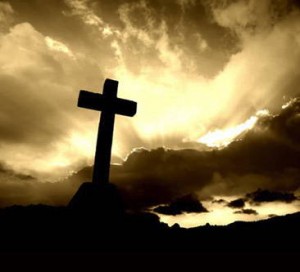 Followers of Jesus will be characterized by death and resurrection.
Followers of Jesus will be characterized by death and resurrection.
We all want to experience the resurrected life of Jesus, but before we can rise to new life in the future, we must die to ourselves and die to our past. The church that does not die chooses instead to live in a vegetative state on artificial life support.
We cling to the past, to the traditions and to the forms of church handed down to us from the eras of Constantine, the Reformation, and Industrialism. Churches that cling to these past forms are still living, but without any real life. This fight to keep from dying allows us to survive, but only as the living dead.
It is when we embrace death that we rise again to new life.
Death Before Life
This cycle of life is seen in the pattern of day and night, the cycle of seasons, and the following of one generation upon another. The importance of death and resurrection is the identifying characteristic of Jesus Himself, and is the central theme in all Scripture.
God waits until Abraham was as good as dead (Heb 11:12) before He gives Abraham a son. God sends Israel into captivity and slavery, with no hope of return and restoration, before He miraculously rescues and delivers them back to their land and rebuilds their temple (Ezra, Nehemiah). He advances the church through the death of the martyrs.
Death and resurrection is everywhere in Scripture, and it must be lived out through our churches as well.
Some of the suggestions in my book, Close your Church for Good, may have caused you to think that if you followed them, you would kill your church. If you cancel your church service, and sell your building, and resign as pastor, you may be afraid that your church would not survive. Let us just admit the truth: Yes, taking some of the steps outlined in this book may indeed kill your church. But two things can be said about this.
The Church Cannot be Killed
First, following some of the suggestions in this book will not actually kill the church. The church cannot be killed. It is the church of Jesus. It is the spiritual gathering of people into the Body of Christ. He establishes the church, protects the church, builds the church, guides the church, and preserves the church.
Buildings, and programs, and pastors do not. Even where the church has no buildings, programs, and pastors, the church of Jesus can still exist, function, and thrive. So while following some of the ideas in this book may kill church as you know it, they cannot touch the church as the Body of Christ.
The Resurrection of the Church
 Which raises the second point. If death precedes resurrection, then while taking some of the actions suggested in this book may cause your church to die and disappear (again, the physical structure with the building and programs and paid staff), the true church of Jesus Christ may actually rise up to new life, light, vibrancy, and faithfulness!
Which raises the second point. If death precedes resurrection, then while taking some of the actions suggested in this book may cause your church to die and disappear (again, the physical structure with the building and programs and paid staff), the true church of Jesus Christ may actually rise up to new life, light, vibrancy, and faithfulness!
Killing the church as we know it may be the first step in raising up the church as it should be. Closing down church as we know it may actually allow the church of Jesus to rise from the ashes, allowing the people of God to passionately live out the love, grace, compassion, and mercy of Jesus in a world full of guilt, pain, and fear.
So we must die. The church must not live to die, but die to live.




Churches are afraid to sell their buildings, stop paying their staff and end their programs. They know that most of their people would depart, either for other churches that have buildings, staff and programs, or for the comfort of their easy chairs.
I wonder, however, if lots of churches did this would we not discover that the real church, those who actually follow Jesus, would still be present and active in the culture? Those who only show up on Sunday to listen and watch and feel they’ve done their religious duty, or appeased God, or whatever their reason for showing up, would be long gone.
Christianity has a long history in Europe. However, if what I read and have been told by people who live there is representative of what has actually happened, as the churches have closed over the past fifty or so years, many of those who once attended now show few signs of being followers of Jesus.
Dallas Willard thinks our churches have many nonbelievers filling the pews, people who say they are Christians. Yes, those folks would probably disappear if churches closed their doors, but the real church would remain.
Which is better, a milquetoast church filled with nonbelievers who congratulate themselves on their Christianity or a church with no walls that is accused of loving and serving sinners?
i like this channel and i love reading christian books and teachings
Jeremy, I think that you could be describing my denomination pretty accurately. We’re dead in the water. We come up with a lot of “rah-rah, go-team” slogans and banners, but we’re still dying more and more each year.
Jeremy:
It begins with each one of us as a member of the Church. It took me a while to get Galatians 2:20 but once I did I became a better husband, friend, father and disciple of Christ. As more and more of me dies and departs what remains is Christ living within. It takes time, but hopefully I reflect Christ to my non-believing friends and family and less of me.
Once the church is filled with “crucified individuals” perhaps it can begin putting away everything else that is a distraction and an obstacle to the cause of Christ in the world like buildings, programs, paid clergy, SS, etc…
Peace,
Mike
David Mercer, In my days as pastor, I went to so many conferences and seminars where I was told to never let them see me sweat. To be the cheerleader, even when things looked bad. To have “faith” when nothing was going right. I understand that this is needed sometimes…it is what leaders do. But leaders also recognize the time to face reality and understand that foolishness is doing the same thing over and over but expecting different results.